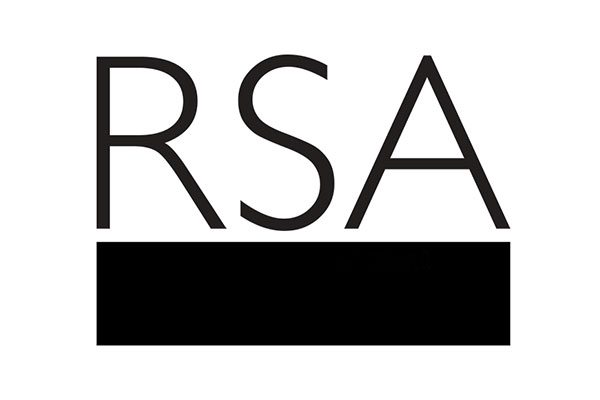Chicago gave rise to the radical community organising approach of Saul Alinsky (made famous by its Barack Obama connection - and a rather unexpected endorsement by David Cameron).
Grassroots neighbourhood planning, in a near-derelict black community on the West Side of Chicago, was also the seedbed for the group facilitation approaches developed by the Institute of Cultural Affairs (a global network focusing on the human factor in world development) - such as the Focused Conversation method and the Consensus Workshop.
A huge amount of brainstorming goes on in groups, but not nearly enough clustering and naming
- Martin Gilbraith, Chief Executive, Institute of Cultural Affairs: UK (+ co-trainer)
This Chicago work became “a prototype for citizen participation in community renewal around the world”, with the methods being used in thousands of communities and organisations worldwide.
Both of these easy-to-use techniques aim to “apply structure to group process, preventing a group from drifting aimlessly” - and could certainly be a help to anyone seeking to enable groups of RSA Fellows to become as effective as possible.
As Sam Thomas, RSA Networks Manager, puts it: “One of the challenges we have is how best to support Fellows who want to work with each other to turn their ideas into projects and practical initiatives. It’s really helpful to see (and try out) some different approaches that we can pass on.”
Sam was one of the RSA Networks Managers who had the opportunity to be trained in using these two ‘Technology of Participation’ facilitation methods which promise to enable “deeper levels of commitment, greater capacity for sharing wisdom and ownership of decisions arrived at collectively”.
One of the challenges we have is how best to support Fellows who want to work with each other to turn their ideas into projects and practical initiatives. It’s really helpful to see (and try out) some different approaches that we can pass on
- Sam Thomas, RSA Networks Manager
The Focused Conversation Method
This provides a structure for discussion and reflection, encouraging diverse perspectives. It uses a four-step structure to open up discussion, examine people’s reactions and then move to decision.
The four steps go by the the acronym ORID:
- Objective (Senses: getting the facts. What?)
- Reflective (Heart: personal reactions/images/associations. Gut?)
- Interpretive (Head: meaning, implications. So what?)
- Decisional (Action: resolution, next steps. Now what?)
Each step plays an important role: the Objective level, for instance, helps to get everyone on the same page and to avoid confusion. And when Reflective level material is not allowed its expression then meetings will often go round in circles.
For each of these levels, the facilitator will have thought of some appropriate questions. Of course, this description gives only a very basic flavour of the Focused Conversation method.
The Consensus Workshop Method
Finding it impossible to come to a consensus? The Consensus Workshop Method helps groups to reach a consensus in a short time (between 30 and 90 minutes), by integrating the ideas and wisdom of all the participants. It can be put to use in setting team priorities, motivating volunteers, developing policy and much else besides.
Above: the outcome of our trial workshop using the Consensus Workshop Method.
The bare bones of the method are that it begins with an open-ended ‘Focus question’, to ignite the group’s creativity. Individuals then brainstorm answers to the question. The best ideas are written onto cards, individually or in teams/pairs.
These ideas are put onto a wall – in a clustering process that manages to simultaneously prevent a overload and invite in diverse and novel ideas. A nifty use of symbols for the clusters quickly enables all the rest of the group’s ideas to be categorised and added to the wall. (The training made memorable use of a ‘miracle’ sticky wall: rip-stop nylon copiously coated in spray mount.)
The next step is to discern the consensus by coming up with names for each cluster. A final ‘resolve’ stage discusses the consensus, along with next steps and implications. Naturally, different elements can be added to the workshop as needed - for instance ‘dot voting’ might be used to prioritise the clusters, or the ideas within a cluster.
The training gave all participants the opportunity to see each method in action, and then to actually facilitate using each method - a very rewarding hands-on experience. The training was far richer than these brief descriptions, of course.
During the training I couldn’t help but wonder, myself, where these two methods might have particular synergies with other approaches to working with groups, and to learning. Might there be connections with Belbin’s team roles, or Kolb’s four-stage learning cycle (ie Concrete Experience, Reflective Observation, Abstract Conceptualisation and Active Experimentation)? Might there be a way to integrate these two ‘Technology of Participation’ methods with approaches to improving conversation in organisations - the ‘Advocacy’ followed by ‘Inquiry’ approach (of Peter Senge and others), the Four Parts of Speech of Bill Torbert (ie Frame, Advocate, Illustrate, Inquire)? Or with approaches that give individuals the chance to play different roles in the group, including the unusual one - ‘devil’s advocate’ – that challenges untested assumptions, collusions and other non-inquiring behaviour.
Might there also be connections with Prof. Lynda Gratton’s ‘Hot Spots’ approach to enabling collaborative innovation in organisations - which focuses on enabling factors such as ‘igniting purpose’, a co-operative mindset and boundary-spanning?
As well as synergies and commonalities, some might even challenge the idea that any enduring consensus can quite so easily be found. A group made up of people with different values may well reach a consensus in support of an idea - just as long as they are not asked to agree on why they support it, when the disagreements will start...
I’m sure I’m not the only member of the RSA’s team of Networks Managers who would love to hear about group facilitation methods that others have used successfully - and which might prove fruitful for RSA Fellows Network meetings, and similar events.
Further reading
- The Change Handbook: The Definitive Resource on Today's Best Methods for Engaging Whole Systems, Peggy Holman and Tom Devane (2007)
- Facilitator's Guide to Participatory Decision-Making, Sam Kaner et al (2007)
- The Skilled Facilitator Fieldbook - Tips, Tools and Tested Methods for Consultants, Facilitators, Managers, Trainers and Coaches, Roger Schwarz et al (2005)
Matthew Mezey is Senior Networks Manager – Online & International and you can follow him @MatthewMezey
Related articles
-
Amnesty International Children’s Human Rights Network and Whitley Bay Film Festival join forces
Jessica McMorrow
Amnesty International Children’s Human Rights Network and Whitley Bay Film Festival are teaming up to celebrate the 30th anniversary of the UN Convention on the Rights of the Child and the campaign for the UK to sign up to Optional Protocol 3 of the Convention.
-
Technology plus loss of belonging equals Trump
Anthony Painter
Anthony Painter argues that the roots of the new populism are explicable but instead of reacting to it reflexively, there needs to be greater collective effort to create a convincing alternative worldview.
-
Why fake news doesn't swing elections
Tony Greenham
Fake news doesn’t swing elections, but neither does ‘truth’. We have always filtered new information to fit our existing prejudices. The real danger to our democracy is not an absence of truth, but an absence of trust.




Join the discussion
Comments
Please login to post a comment or reply
Don't have an account? Click here to register.
thanks for this post, Matthew. Yes there are certainly synergies with other approaches - for example we have case studies on the ICA:UK website of how we have applied these ToP methods in conjuction with elements of Open Space and Solutions Focus (with Bron Afon Community Housing) and with elements of Participatory Appraisal (with Wigan Borough Council). I think most of the people we train in these methods each year adapt and apply them in conjunction with others - I'm very keen to read what further potential for that your readers might suggest.